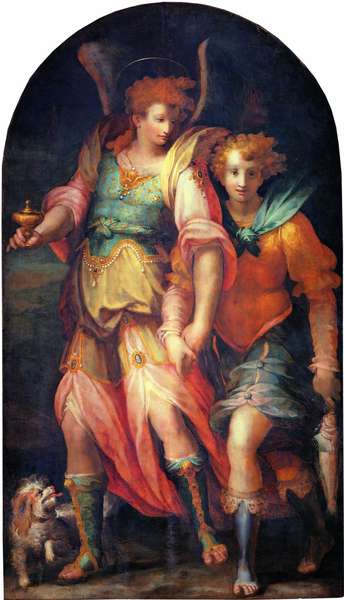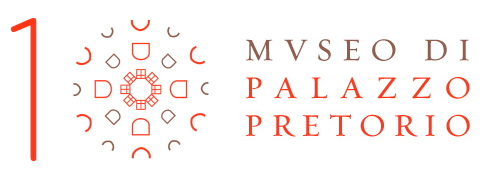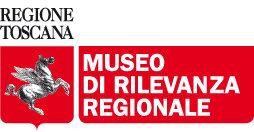The great altarpieces

Francesco Morandini, known as il Poppi, Tobias and the Angel, 1572-1573
The great altarpieces displayed in the magnificent hall on the second floor form an important part of the Museum’s collection. Coming mainly from churches in Prato, they were acquired by the City subsequent to the ecclesiastical suppressions of the late 19th century. These works, dating from the late 16th to the early 18th century, speak to us of a city bursting with ideas and artists, in a territory abounding in monasteries and convents, churches and brotherhoods, oratories and tabernacles.
A persuasive, participatory style, easy to understand, pervaded the figurative art of the 16th century after the Counter-Reformation. Contributing to the fervent climate in the city was Caterina de’ Ricci (1522-1590), the Prato saint, who lived for many years in the Dominican Convent of San Vincenzo. Two panels coming from the Convent of Santa Caterina belong to the second half of the century, the Mystical Marriage of Naldini and Balducci and the Circumcision by the Prato artist Paolo degli Organi. Dating from the same period and showing the influence of Pontormo, Tobias and the Angel, from the ancient Compagnia dell’Angelo Raffaele, is one of Poppi’s most felicitous pictorial inventions, evincing the modern manner in the elongated figures and sophisticated decoration on the gowns.
Exemplifying early 17th-century Florentine style are the three superb altarpieces, one by Santi di Tito and two by Alessandro Allori, painted for the chapel of the Spini at Peretola (donated to the Museum by Angela Riblet in 2011). During those same years the Prato artist Leonardo Mascagni received numerous commissions in the city. The collection includes the Calling of St. Matthew (from the monastery of the same name, later suppressed), still linked to late 16th-century culture.
Refined Florentine artists such as Bilvert, who painted for San Francesco the original Annunciation, worked in Prato in the following period when the influence of the Medicean court was becoming dominant. In 1653, Grand Duke Ferdinando II raised Prato to the status of City and promoted several projects entrusted for the most part to Florentine artists, such as Balassi, represented here by the charming Miracle of St. Nicholas of Tolentino and by two others fine works commissioned by the City for Palazzo Comunale.
Three great altarpieces from the 18th century, two of them painted contemporaneously for the church of the Monastery of San Matteo, are of superb quality: the Miracle of St. Nicholas of Tolentino by Sigismondo Betti and the extraordinary Annunciation by Giovan Domenico Ferretti, while was the altarpiece depicting St. Catherine of Alexandria by Francesco Conti adorned the splendid Renaissance sanctuary of Santa Maria delle Carceri.

